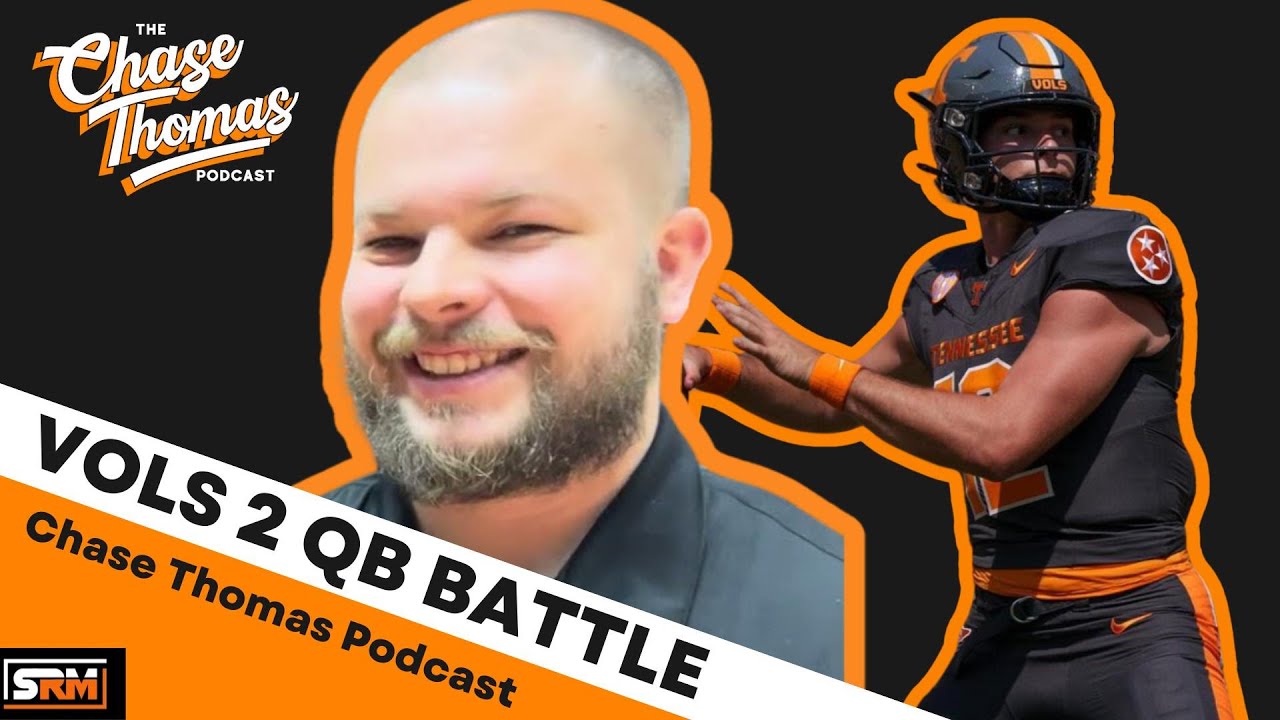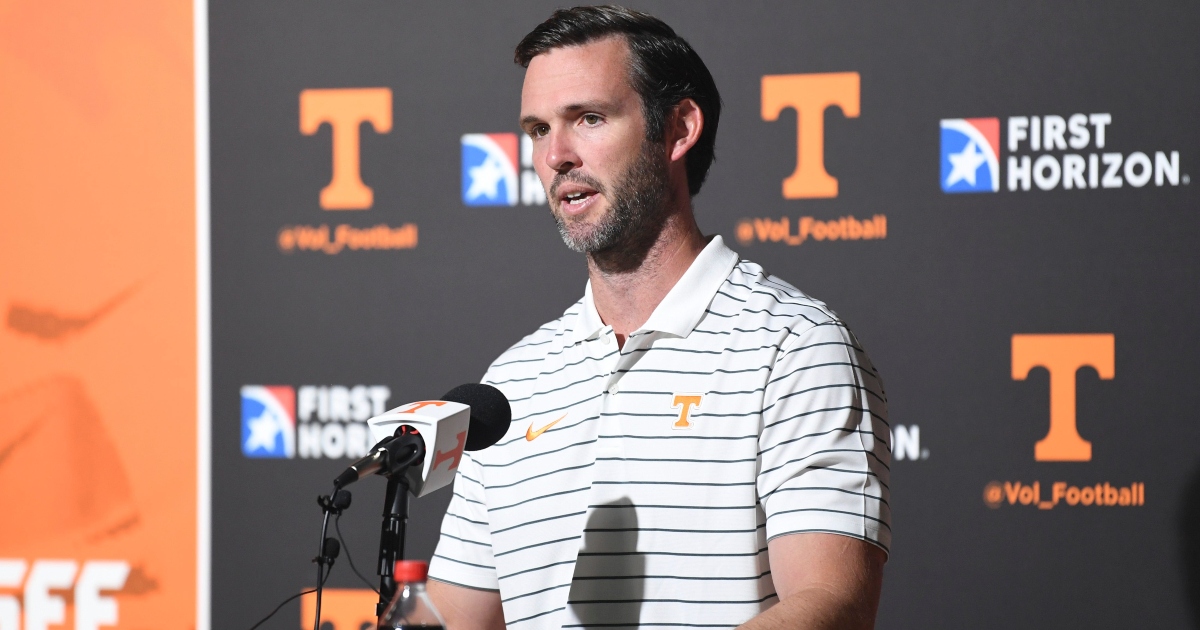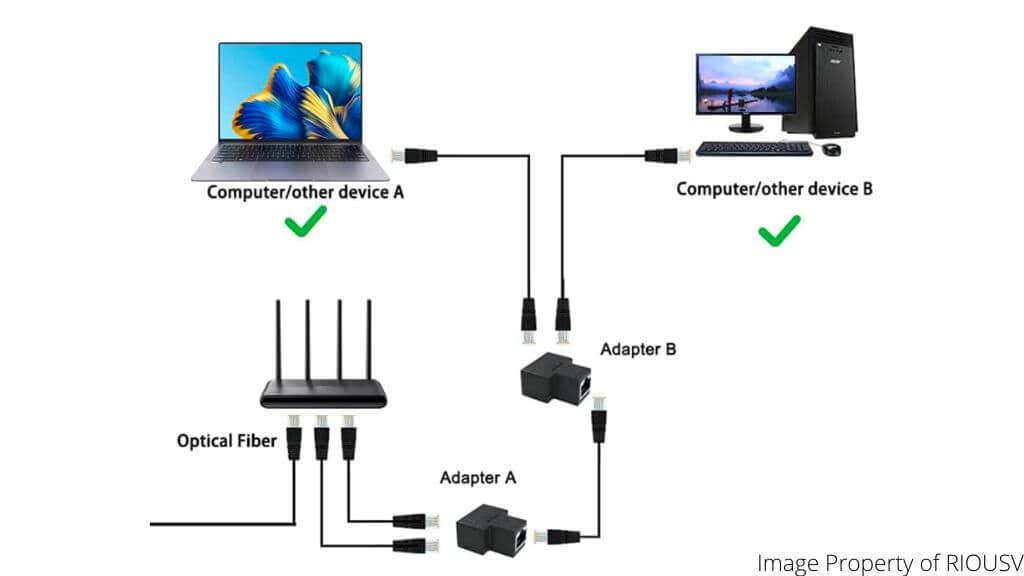NIL
A writer criticizing Ohio State NIL approach
I do not understand the situation completely. But here is my hunch about what is going on. I could be wrong. Ohio State is promising only pay-for-play, which is based on some 14M to football Bjork talked about, as a result of the House settlement. But there is also a NIL program working through collectives […]

I do not understand the situation completely. But here is my hunch about what is going on. I could be wrong.
Ohio State is promising only pay-for-play, which is based on some 14M to football Bjork talked about, as a result of the House settlement. But there is also a NIL program working through collectives at the same time. Ohio State is not touching that, and the player will have to work out with collectives after they enroll. The NIL money through collectives must be approved by a special clearinghouse (not NCAA). If the NIL money is not consistent with the market value, the clearinghouse will deny it. So, imagine Ohio State is working with just 14M, and the money is to be divided among the players on the entire rosters. The amount to offer to one recruit will necessarily be small. It would be very difficult to offer anyone 1M.
But how about USC? They offer not only the pay-for-play, which would be similar to ours. They also offer NIL money through collectives. But the clearinghouse will not be operating until July 1. How can they offer NIL-collective money? They assume the old rule applies (no clearinghouse approval needed) until July 1. So, in the meantime they offer outrageous NIL package.
Ohio State interprets that the new rules have been in effect since the judge made the ruling. That is why the article says we “follow the rules to the tee”.
So, something interesting might happen on July 1.
NIL
Tennessee QB battle
Following a tumultuous offseason that saw returning starting QB Nico Iamaleava transfer to UCLA after a dispute over NIL compensation, Tennessee has officially moved on at quarterback. That involved adding former Appalachian State transfer Joey Aguilar — by way of UCLA — out of the NCAA Transfer Portal in what effectively amounted to college football’s […]



Following a tumultuous offseason that saw returning starting QB Nico Iamaleava transfer to UCLA after a dispute over NIL compensation, Tennessee has officially moved on at quarterback. That involved adding former Appalachian State transfer Joey Aguilar — by way of UCLA — out of the NCAA Transfer Portal in what effectively amounted to college football’s first QB trade.
Upon landing in Knoxville back in June, the veteran Aguilar joined a talented albeit wholly inexperienced Volunteers quarterback room that included redshirt freshman Jake Merklinger, a third-stringer last season, and four-star true freshman George MacIntyre, both of whom participated in Spring practice.
Given his prior experience at Appalachian State, which included two record-breaking seasons in Boone, N.C., Aguilar is the overwhelming favorite to lead the Volunteers out of the tunnel this upcoming season. But since Wednesday’s start to preseason camp will be his first official practice in Knoxville, Tennessee coaches aren’t yet ready to name a starting quarterback.
Of course, that doesn’t mean third-year Vols offensive coordinator Joey Halzle doesn’t know what he’s looking for from whomever Tennessee ultimately names QB1 ahead of the Aug. 30 season opener vs. Syracuse at Atlanta’s Mercedes-Benz Stadium.
“First and foremost, you’ve got to play this game in this offense with an aggressive nature. I think a lot of times, the mistake quarterbacks make in a competition is they try not to lose it. They try just not to make a mistake. We want out guy to walk the line between being extremely aggressive but not reckless at all,” Halzle said Tuesday ahead of Tennessee’s first official preseason practice Wednesday. “Reckless is just throwing a ball up for grabs. Aggressive is driving a ball into a tight window. So, we want our guy to be aggressive, we want him to be smart, and we want him to operate this offense.”
The 6-foot-3, 225-pound Aguilar is known as an athletic playmaker having rushed for 452 yards and five touchdowns the past two seasons at Appalachian State, along with throwing for 6,760 yards and 56 touchdowns on 60-percent passing with the Mountaineers. Aguilar played his first two collegiate seasons in the junior college ranks at Diablo Valley.
Meanwhile, Merklinger is considered more of a traditional passer after appearing in just two games as a freshman in 2024, completing 6-of-9 passes for 48 yards to go along with seven carries for 22 yards in early-season mop-up duty last season.
“It’s not just about who throws the ball the furthest or the hardest. It’s about who can operate this offense that when we take the field, he gives us a chance to win,” Halzle continued. “Whether that’s them carrying the football, them getting to their check downs and then making big plays down the field. However it presents to that individual’s skill set, it’s them doing that at an extremely high level to where we say that’s the guy that gives us the best chance to be up plus-1 at the end of a ballgame.”
Earlier Tuesday, Tennessee head coach Josh Heupel expressed hope one of the three Vols QBs will establish himself as “the guy” in Knoxville early in Fall camp to allow the team an opportunity to develop some consistency ahead of the season-opener. Whether that’s Aguilar or another UT quarterback remains to be seen, but all early indications are it’s the veteran transfer’s job to lose.
NIL
Transfer, rehab, and the splitter
The landscape of college athletics has shifted dramatically with the rise of the transfer portal, allowing student-athletes to find programs that best fit their goals both on and off the field. For former Morrisville High School product Jorden Sesar, one final stop through the portal could be the step that positions him to get drafted—or […]



“It’s a grind. You meet a lot of new guys and a lot of new coaches with different coaching styles,” Sesar said. “Everybody wants the best for you, but you have to worry about yourself.”
The 6-foot-4 righty is no stranger to that grind. He made an immediate impact at Bucks County Community College, posting a 2.25 ERA over 12 appearances—nine of them starts—and recording an eye-popping 89 strikeouts in just 48 innings. He had momentum, and plenty of it.
But that momentum came to a halt in the spring of 2023, when Sesar began experiencing elbow discomfort.
“I rehabbed that year to get ready to play with the Trenton Thunder in the MLB Draft League. Unfortunately, it didn’t work out; the arm was still bothering me,” Sesar recalled. “I went and got it looked at that summer and ended up needing surgery.”
Fortunately, the procedure—ulnar nerve transposition surgery—came with a relatively short six-month recovery. Once cleared, Sesar got to work. By August of 2023, he committed to Division I Manhattan College. In limited action with the Jaspers, he impressed: seven appearances, 11 innings, and a 1.64 ERA.
Following the season, he entered the portal again—this time landing at Holy Family University in Philadelphia. With the Tigers in 2025, Sesar led the staff with 50 strikeouts over 39.2 innings. He recorded six or more strikeouts in six of his eight starts, including a seven-inning complete game against Chestnut Hill in which he fanned 10.
“Wherever you go now these days it’s competitive,” Sesar said. “Whether it’s D1, D2, or D3, you’re going to have guys that can hit the ball. They are going to put up competitive at-bats. It’s all about you as a competitor. You have to go out there and compete regardless at what level you’re at.”
To become more competitive himself, Sesar added a new pitch to his arsenal. Originally working with a three-pitch mix, he took on the challenge of learning one of the game’s most difficult pitches—the splitter—thanks to Andrew Lihotz, Director of Philly Select Baseball.
“Drew helped me out a lot with the pitch,” Sesar said. “It was rough at first—a lot of throwing it during catch play and sitting with a softball in between my fingers to stretch them out. Just those little things helped out.”
The splitter has since become a key part of his five-pitch mix, which also includes a fastball that touches 95 mph, a changeup, and a curveball. The results have followed—both for Sesar and for Rake, his team in the Philly Select Baseball League.
“He’s been phenomenal. Every time he’s on the mound he gives us a chance to win,” said Rake’s head coach, Stuart Drossner.
Drossner knows what it takes to get noticed. His son Jake was drafted out of Council Rock North by the Cubs in the 23rd round of the 2012 draft, then again in the 10th round by the Brewers after a standout career at Maryland.
“Jorden just needs an opportunity. He has a really good arm. He probably could get back to Division I and be a bullpen arm right now. He’s good,” Drossner said.
Both Sesar and Drossner understand that talent finds a way—whether you’re in national showcases or throwing on local fields in rural counties. For Sesar, the goal is simple: extend the journey just a little longer.
“You’re playing baseball at the end of the day,” Sesar said. “It doesn’t matter where you’re at—you’ll get seen.”
NIL
Zag revs up the World Supercross Championship with a brand built for dirt, culture and global growth
Sport is a crowded business, and while global leagues like the NFL and Premier League enjoy billion-pound broadcast deals and cross-generational fandom, emerging competitions like the World Supercross Championship have to build from the ground up. That means more than a new logo or colour palette. It means rethinking what a sports brand is and […]


Sport is a crowded business, and while global leagues like the NFL and Premier League enjoy billion-pound broadcast deals and cross-generational fandom, emerging competitions like the World Supercross Championship have to build from the ground up. That means more than a new logo or colour palette. It means rethinking what a sports brand is and who it’s really for.
When the World Supercross Championship approached Zag, the brief wasn’t to “modernise” or copy the big leagues. The goal was to create a brand that could grow with its audience, rooted in culture rather than convention, and appeal to both long-time fans and those just discovering the sport.
“The breakthrough came when we stopped thinking of World Supercross as a traditional motorsport and started seeing it as a global subculture,” says James Hurst, partner and chief creative officer at Zag. “The existing fanbase wasn’t looking for polish or prestige — they wanted authenticity, adrenaline, and identity.”


Rather than begin with legacy sports models, Zag’s strategy team cast the net wide. They reviewed 31 brands and interviewed investors and insiders, not just in sport but across entertainment and creator culture. They drew inspiration from newer, fan-first formats like Kings League and Fan Controlled Football, as well as the expressive visual identities of music and streetwear, and from live experiences like Burning Man that blend performance and participation.
These references helped the team understand what modern fans want: shorter, sharper bursts of entertainment; multiple ways to engage with the action; and a sense of direct connection to the athletes themselves. The goal wasn’t to sanitise the Supercross identity for the mainstream, but to amplify what made it magnetic. “We realised this wasn’t a sport that needed to be massified; it needed to be magnified,” says James.
The result of that thinking is a brand that’s unapologetically itself, starting with the strategic platform “Make Dirt Fly.” More than a slogan, the phrase became a creative and commercial North Star.
“It captured the visceral thrill of the sport, it celebrated the subcultural swagger of the community, and it signalled the global ambition to take this experience to new audiences,” explains James. “It became more than a line — it was a filter for every creative decision.”


That positioning needed an identity system to match, and so Zag made a point of avoiding tired motorsport tropes. “We began with a banned list: chrome gradients, checkered flags, carbon fibre textures, italicised speed fonts — anything that felt predictable or performative,” James recalls. Instead, they built from the dirt up: tyre treads, terrain marks and motion behaviours formed the basis of a design language that’s both raw and expansive.
The new logo takes its cues from the track, incorporating a semiotic metaphor in the form of a knobbly tyre tread “W” mark. A custom typeface, reworked from Space Grotesk, anchors the visual identity with confidence and clarity. The photography style favours fisheye perspectives, dynamic crops and gritty textures, leaning into the visual heritage of extreme sports while making room for fresh storytelling.
One of the most distinctive components is what Zag calls “The Global Canvas.” It’s a modular system combining circular motifs (echoing planetary motion and the sport’s global reach) with tactile graphics built from tyre textures and dirt trails. The effect is flexible but cohesive and easily adapted across live events, social content, merch, broadcast graphics and beyond.
“Every asset º from arena graphics to motion tiles – can be built from the same system, with just enough flexibility to reflect local energy and individual style,” says James.
This was crucial for a competition with global ambition. The 2025 season kicks off in October and will see races in Kuala Lumpur, Vancouver, Buenos Aires, Cape Town and the Gold Coast. The new identity helps bridge audiences and geographies while staying rooted in the culture of Supercross itself.



“We wanted to build something that felt grounded in the dirt but designed to travel,” says James. “The more we leaned into the authenticity of the community – their language, style, rituals – the more distinct and exportable the brand became.”
That sense of specificity has a commercial purpose, too. In a sports media environment shaped by free-to-air content, creator-led leagues and audience fragmentation, Zag’s strategy goes beyond aesthetics. Their discovery work explored new revenue opportunities, the future of broadcast formats, and fan engagement models inspired by esports and digital-first brands. The identity system is built to flex alongside these ambitions.
For Luisa Fernandez, chief product officer at the World Supercross Championship, the process was about more than surface-level rebranding. “The Zag team were incredible at helping us not just create a new brand for our sport, but helping us achieve our long-term product and growth ambitions,” she says. “They brought niche but relevant analogues, were always open to challenge, and were a true partner throughout.”
As more challenger leagues look to scale without simply mimicking the big players, Zag’s approach offers a blueprint for building sports brands that are expressive, culturally literate, and designed to feel alive.
“The next generation of sports brands will be built less like institutions and more like movements,” says James. “Supercross isn’t trying to be for everyone – and that’s exactly why it has the potential to go everywhere.”
NIL
Football’s Sam Howard Named to the 2025 Bronko Nagurski Trophy Preseason Watch List
DALLAS – Tulane senior linebacker Sam Howard was recently named to the 2025 Bronko Nagurski Trophy Preseason Watch List by the Football Writers Association of America (FWAA). The list contains players from 41 different schools in eight Division I FBS conferences plus independents. By position, the list includes 21 linebackers, 11 defensive ends/edge rushers, 10 […]

The list contains players from 41 different schools in eight Division I FBS conferences plus independents. By position, the list includes 21 linebackers, 11 defensive ends/edge rushers, 10 cornerbacks, 10 defensive tackles and eight safeties. A total of 60 players nationally were named to the preseason watch list this season. The trophy is given annually to the National Defensive Player of the Year.
Howard played and started 13 games at linebacker last season for Tulane in his first year with the program. He set a school record with five fumble recoveries while totaling 63 tackles, 5.5 tackles for loss, 2.5 sacks and an interception. He was a 2024 Second Team All-AAC selection.
The FWAA and the Charlotte Touchdown Club will announce the finalists for the 2025 Bronko Nagurski Trophy in mid-to-late November, and the winner will be revealed at the Bronko Nagurski Awards Banquet on Dec. 8 in Charlotte, N.C.
Players may be added or removed from the watch list during the course of the season. As in previous years, the FWAA will announce a Bronko Nagurski National Defensive Player of the Week each Tuesday during the season.
The FWAA All-America Committee, after voting input from the association’s full membership, selects a 26-man All-America Team and eventually the Bronko Nagurski Trophy finalists. Committee members, by individual ballot, select the winner they regard as the best defensive player in college football.
The FWAA has chosen a National Defensive Player of the Year since 1993. In 1995, the FWAA named the award in honor of the legendary two-way player from the University of Minnesota. Nagurski dominated college football, then became a star for professional football’s Chicago Bears in the 1930s. Bronislaw “Bronko” Nagurski is a charter member of both the College Football and Pro Football Halls of Fame.
The Bronko Nagurski Trophy is a member of the National College Football Awards Association (NCFAA), which encompasses college football’s most prestigious awards. The NCFAA’s 25 awards have honored more than 950 recipients since 1935.
Sixteen NCFAA members are unveiling preseason watch lists over a two-week period as the association spearheads a coordinated effort to promote each award’s preseason candidates.
Following is the remaining 2025 preseason watch list calendar:
Tue., July 29: Outland Trophy
Wed., July 30: Paycom Jim Thorpe Award/Butkus Award
Thu., July 31: Paul Hornung Award/Allstate Wuerffel Trophy
Fri., Aug. 1: Lou Groza Award/Ray Guy Award
Mon., Aug. 4: Walter Camp Award
Tue., Aug. 5: Doak Walker Award
Wed., Aug. 6: Biletnikoff Award
Thu., Aug. 7: Davey O’Brien Award
Fri., Aug. 8: Mackey Award/Rimington Trophy
Mon., Aug. 11: Bednarik Award
For more information about the NCFAA and its award programs, visit NCFAA.org or follow on X at @NCFAA.
The Charlotte Touchdown Club is a 501(c)3 non-profit organization founded in 1990 for the purpose of promoting high school, collegiate, and professional football in the Charlotte, North Carolina region. Since its inception, the club has grown as well as diversified boasting a sponsor team of more than (80) companies. The Club’s activities and services focus community attention on the outstanding Citizenship, Scholarship, Sportsmanship, and Leadership of area athletes and coaches. Through individual and corporate support, more than $3,000,000 has been raised and donated to benefit the Touchdown Club’s scholarship efforts.
Coca-Cola Consolidated is the largest Coca-Cola bottler in the United States. Our purpose is to honor God in all we do, to serve others, to pursue excellence and to grow profitably. For over 121 years, we have been deeply committed to the consumers, customers and communities we serve and passionate about the broad portfolio of beverages and services we offer. \
We make, sell and distribute beverages of The Coca-Cola Company and other partner companies in more than 300 brands and flavors across 14 states and the District of Columbia, to approximately 60 million consumers. Headquartered in Charlotte, N.C., Coca-Cola Consolidated is traded on The Nasdaq Global Select Market under the symbol “COKE”. More information about the Company is available at www.cokeconsolidated.com. Follow Coca-Cola Consolidated on Facebook, Twitter, Instagram and LinkedIn.
Founded in 1941, the Football Writers Association of America consists of 1,300 men and women who cover college football. The membership includes journalists, broadcasters and publicists, as well as key executives in all the areas that involve the game. The FWAA works to govern areas that include game-day operations, major awards and its annual All-America team.
____________________________________________________________________________________
The Tulane football team (9-5) ended the 2024 season playing in the program’s third consecutive bowl game. It was also the sixth time in the last seven years that Tulane had been selected to play in a bowl game (2018 – Cure Bowl, 2019 – Armed Forces Bowl, 2020 – Famous Idaho Bowl, 2022 – Cotton Bowl, 2023 – Military Bowl and 2024 – Gasparilla Bowl). Overall, it was Tulane’s 17th bowl appearance (1932 – Rose Bowl, 1935 – Sugar Bowl, 1939 – Sugar Bowl, 1970 – Liberty Bowl, 1973 – Astro Bluebonnet Bowl, 1979 – Liberty Bowl, 1980 – Hall of Fame Bowl, 1987 – Independence Bowl, 1998 – Liberty Bowl, 2002 – Hawaii Bowl, 2013 – New Orleans, 2018 – Cure Bowl, 2019 – Armed Forces Bowl, 2020 -Famous Idaho Bowl, 2022 – Cotton Bowl, 2023 – Military Bowl and 2024 – Gasparilla Bowl) with the program sporting an all-time record of 7-10 in bowl games.
Tulane also made the team’s third straight AAC Championship Game appearance. The program sports a 32-10 record over the last three seasons. The team’s 32 wins is the fourth-most nationally. The team placed first or second in the AAC in 10 different categories including leading the league in third down conversions (52.5), defensive touchdowns (6), completion percentage (65.6), scoring offense (37.2) and passing efficiency defense (111.65). The team was the national leader in defensive touchdowns with six.
The team had a league-high 18 players selected All-AAC last season including 2025 returners Derrick Graham (First Team – offensive tackle), Shadre Hurst (First Team – offensive guard), Sam Howard (Second Team – linebacker), Bailey Despanie (Second Team – defensive back) and Kameron Hamilton (Third Team – defensive line)
The Green Wave’s football team was chosen for third in the 2024 AAC Preseason Media Poll with 362 points plus two first-place votes at the annual conference media day.
The school announced the hiring of Jon Sumrall as the 42nd head coach of the team on December 8, 2023. The Huntsville, Alabama native has been one of the most successful head coaches in the country the last three seasons with a record of 32-9, two Sun Belt Conference championships and a pair of double-digit winning streaks. He was named Sun Belt Conference Coach of Year and was twice named a finalist for the Eddie Robinson Coach of the Year honor. Sumrall returned to Tulane after serving as the Green Wave’s Co-Defensive Coordinator for three years (2012-14). In 2013, he was a crucial part of Tulane’s run to the New Orleans Bowl, the program’s first postseason appearance since 2002 and third since 1988. Sumrall also was named a finalist for FootballScoop Defensive Line Coach of the Year.
TICKETS
Tickets for the upcoming football and volleyball seasons can be purchased by calling 504-861-WAVE (9283), logging on to TulaneTix.com or visiting the ticket office at the James W. Wilson Jr. Center.
SOCIAL MEDIA
Follow Tulane football on Twitter and Facebook and Instagram. Follow Tulane Athletics on Twitter, Facebook, and Instagram.
WE ARE NOLA BUILT
Tulane University is located in the city of New Orleans. It is a city built on tradition and resiliency. The lessons Green Wave student-athletes have learned through their connection with this university and city have BUILT doctors, lawyers, business leaders, conference champions, all-conference players, All-Americans, professional athletes and NCAA tournament teams. The city of New Orleans has shaped us into who we are today. We are One City. We are Tulane. We are NOLA BUILT. Check out our story at NolaBuilt.com.
– TulaneGreenWave –
NIL
Jarrod Loadholt and Ken Robinson
Listen to this story Subscriber Benefit As a subscriber you can listen to articles at work, in the car, or while you work out. Subscribe Now Loading audio file, please wait. Speed1.00 0.25 0.50 0.75 1.00 1.25 1.50 1.75 2.00 On July 1, 2025, the NCAA entered a new era of college sports compensation following […]


Subscriber Benefit
As a subscriber you can listen to articles at work, in the car, or while you work out.
Subscribe Now
Loading audio file, please wait.
Speed1.00
0.25
0.50
0.75
1.00
1.25
1.50
1.75
2.00
 On July 1, 2025, the NCAA entered a new era of college sports compensation following a $2.8 billion settlement in House v. NCAA, which provides retroactive and prospective NIL payments to student-athletes, allows direct payments from institutions to players, and establishes a 10-year revenue-sharing model.
On July 1, 2025, the NCAA entered a new era of college sports compensation following a $2.8 billion settlement in House v. NCAA, which provides retroactive and prospective NIL payments to student-athletes, allows direct payments from institutions to players, and establishes a 10-year revenue-sharing model.
The agreement also allows for expanded roster and scholarship limits across several sports and establishes a new enforcement mechanism—“NIL GO”—a Deloitte-managed clearinghouse responsible for reviewing non-school NIL deals over $600 for fair market value.
While the settlement agreement is widely viewed as a win for student athletes, it also highlights murky legal terrain for collectives and schools that may violate immigration law if they compensate international student-athletes.
In the absence of federal guidance, several questions remain:
Can international student athletes legally participate in revenue sharing under current visa restrictions?
What types of NIL activities are currently permissible for F-1 visa holders, and how can schools and collectives ensure compliance with immigration law?
How should schools, collectives, or international student-athletes structure NIL deals that are compliant with F-1 visa restrictions?
The overlap between immigration policies, NIL rules
Currently, more than 25,000 international student-athletes from countries around the world compete in NCAA sports.
These athletes face a unique set of challenges when it comes to navigating the evolving NIL landscape. Moreover, the collectives and schools that serve these students must also work through a system that lacks clear federal guidance and presents significant legal risks.
While recent reforms have expanded NIL opportunities for domestic student-athletes, including direct school payments, revenue-sharing, and broader endorsement rights, the NIL landscape has yet to fully address—nor has immigration policy resolved—the unique challenges facing international student-athletes.
Despite the sweeping changes since our last update in 2023, neither the DHS nor the Student and Exchange Visitor Program (SEVP) have issued guidance on how and whether international student-athletes can participate in NIL agreements without violating immigration law.

To be clear, student-athletes on F-1 visas must follow immigration rules that strictly limit the types of activities for which they can be paid. To understand what international student-athletes can do, it’s helpful to first look at the various F-1 restrictions and requirements:
No off-campus employment without authorization: F-1 students are generally prohibited from working off-campus unless specifically authorized through programs like Curricular Practical Training (CPT) or Optional Practical Training (OPT). See 8 C.F.R. § 214.2(f).
Limited on-campus employment: F-1 students are permitted to hold on-campus jobs, but only if it is directly affiliated with the school (e.g., bookstore, cafeteria). NIL-related activities typically do not qualify as on-campus employment. See 8 C.F.R. § 214.2(f).
Self-employment prohibited: F-1 students cannot operate a business or engage in self-employment, including NIL ventures run from a dorm room or personal brand monetization without authorization. See Handbook for Employers M-274.
“Employment” is defined broadly: In the immigration context, “employment” is defined as “any service or labor performed by an employee for an employer within the United States,” regardless of compensation. See 8 C.F.R. § 274a.1(h). Even unpaid NIL activities may be considered unauthorized employment if they benefit a third party.
In Tenn. Coal, Iron & R.R. Co. v. Muscoda Local No. 123, the United States Supreme Court defined employment as the “physical or mental exertion (whether burdensome or not) controlled or required by the employer and pursued necessarily and primarily for the benefit of the employer and his business.” 321 U.S. 590, 598 (1944). This definition is used to assess whether an activity qualifies as employment under immigration regulations.
NIL activity must be evaluated by location and nature: What is permissible? Passive income (e.g., royalties, copyright licenses, passive compensation) or NIL activities performed entirely outside the United States.
What is impermissible? Active NIL engagements (e.g., appearances, autograph signings, content creation) performed within the United States, even without compensation.
Maintaining F-1 status: Students must remain enrolled full-time and avoid any activity that could be interpreted as unauthorized employment, which could jeopardize their visa status and future immigration benefits.
Legal consequences: For schools/collectives, there are civil and criminal penalties for knowingly employing unauthorized workers. Students face the loss of immigration status, ineligibility for future benefits and potential removal proceedings.•
__________
Jarrod F. Loadholt and Ken Robinson are partners at Ice Miller. Summer associate Gerry Regep contributed to this article. Opinion expressed are those of the authors.
Please enable JavaScript to view this content.
NIL
Every school is basically a junior college nowadays
MORGANTOWN — There was a time in college basketball when junior college coaches were sort of like being the kid down the block. There’s nothing wrong with that kid. It’s perfectly fine to hang out with him after school. It’s just when it comes time for the birthday parties, the kid down the block rarely […]



MORGANTOWN — There was a time in college basketball when junior college coaches were sort of like being the kid down the block.
There’s nothing wrong with that kid. It’s perfectly fine to hang out with him after school.
It’s just when it comes time for the birthday parties, the kid down the block rarely gets an invite.
That was, at one time, the perception of a junior college hoops coach, the life once had by WVU men’s coach Ross Hodge.
“They only have guys for a year, or two,” Hodge said in elaborating on the perception. “Can they really take four-year guys and develop them?”
Division I coaches have always recruited the heck out of JUCO players, but when it came time to hire a new coach, guys like Hodge rarely got that invite.
Except now the college sports landscape has completely changed. Every school, no matter if it’s a Power Five school or otherwise, is basically a junior college (a two-year school).
Players come and go. They hit the transfer portal after one season and rosters have to be retooled on a yearly basis.
“Now, it’s flipped, where every year you’re going to have high-roster turnover,” Hodge continued. “You’re going to be merging a group of guys together and how quickly can you get them to come together and play for one purpose?”
Hodge is the fourth WVU head coach in four years. That’s created a sort of revolving door when it’s come to the Mountaineers’ roster.
From 2023-25, the WVU men’s program had a combined 39 scholarship players. Only nine of those 39 had returned to WVU from the previous season.
Add in Hodge’s first roster — currently at 12 scholarship players — that number is 10 out of 51.
WVU’s current roster — Hodge said he’s currently looking at who is still remaining in the portal for a possible addition — is eight transfers, three incoming freshmen and one holdover in redshirt freshman center Abraham Oyeadier.
WVU fans will likely need more than a roster to keep everyone straight. Name tags might not even do the trick.
The players come from all walks of life. All four time zones in the U.S. are covered in their previous college stops and the majority of them have already experienced some level of success.
Honor Huff is the nation’s leading returner with 131 3-pointers after guiding Chattanooga to the NIT championship last season. Treysen Eaglestaff was the only player in the NCAA last season to have multiple 40-point games. Brenen Lorient was the American Athletic Conference’s Sixth man of the Year last season.
“They have an experience with winning,” is the way Hodge explains it. “They understand that part of it and what it takes. You’re just trying to get them to understand how are we going to win together.”
From 2006-11, that was the question Hodge asked himself on a yearly basis.
As the head coach at Paris Junior College and Midland (Texas) College, Hodge’s rosters were built from scratch year after year.
What he’s doing now at WVU, it’s not exactly a new experience.
Hodge won 85% of his games at the JUCO level, including one season at Midland where the Chaps finished as the national runner-up.
Hodge had eight players on that roster who moved up to Division I, including Guy Edi, who played at Gonzaga, Ty Nurse (Texas Tech), Dwight Miller (Tennessee) and Jamaal Trice (UConn).
The question now: Can Hodge find that same type of success with a rebuilt roster at the major Division I level?
That’s what he’s been trying to figure out during the team’s summer workouts.
“It’s kind of like you’re running marathons at sprinters’ paces,” he said. “Efficient is a good word. You have to be efficient with your time. You have to be purposeful.
“Our senior class, we only have them for a very short amount of time.”
Note
WVU forward Jackson Fields announced on social media Tuesday he will undergo surgery.
He was with his WVU teammates at the Best Virginia game in Charleston on Monday with a brace on his left wrist.
Fields did not say how much time, if any, he was expected to miss this season.
Fields transferred to WVU this season from Troy, where he averaged 7.9 points and 4.8 rebounds per game last season.
-

 Fashion2 weeks ago
Fashion2 weeks agoEA Sports College Football 26 review – They got us in the first half, not gonna lie
-

 Health2 weeks ago
Health2 weeks agoCAREGD Trademark Hits the Streets for Mental Health Month
-

 Youtube3 weeks ago
Youtube3 weeks agoWill Giannis DEPART Milwaukee⁉️ + How signing Turner & waiving Dame impacts the Bucks | NBA Today
-

 Sports2 weeks ago
Sports2 weeks agoVolleyball Releases 2025 Schedule – Niagara University Athletics
-

 Sports2 weeks ago
Sports2 weeks agoNew NCAA historical database provides wealth of information on championships
-

 Sports2 weeks ago
Sports2 weeks agoAdapti, Inc. (OTC
-

 College Sports2 weeks ago
College Sports2 weeks agoBuford DB Tyriq Green Commits to Georgia
-

 High School Sports5 days ago
High School Sports5 days ago100 days to men's college basketball
-

 Youtube3 weeks ago
Youtube3 weeks agoThe Twins squeeze out a walk-off win 👀
-

 Rec Sports1 week ago
Rec Sports1 week agoFlorida woman, 20, accused of pepper-spraying rich men in Miami Beach hotels, stealing their luxury watches


























